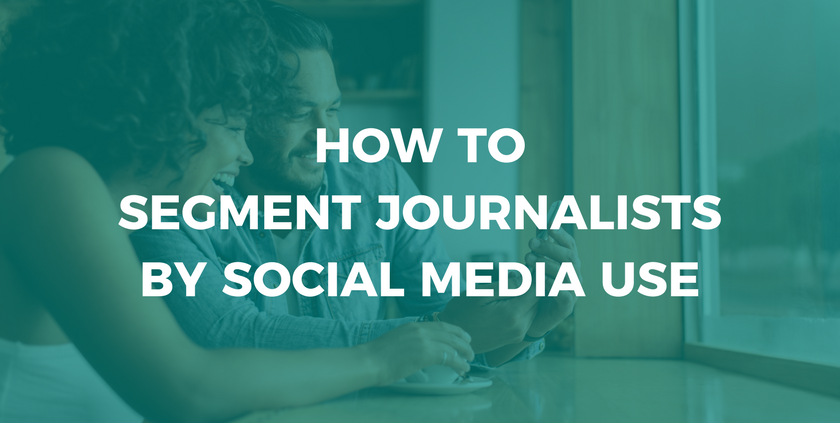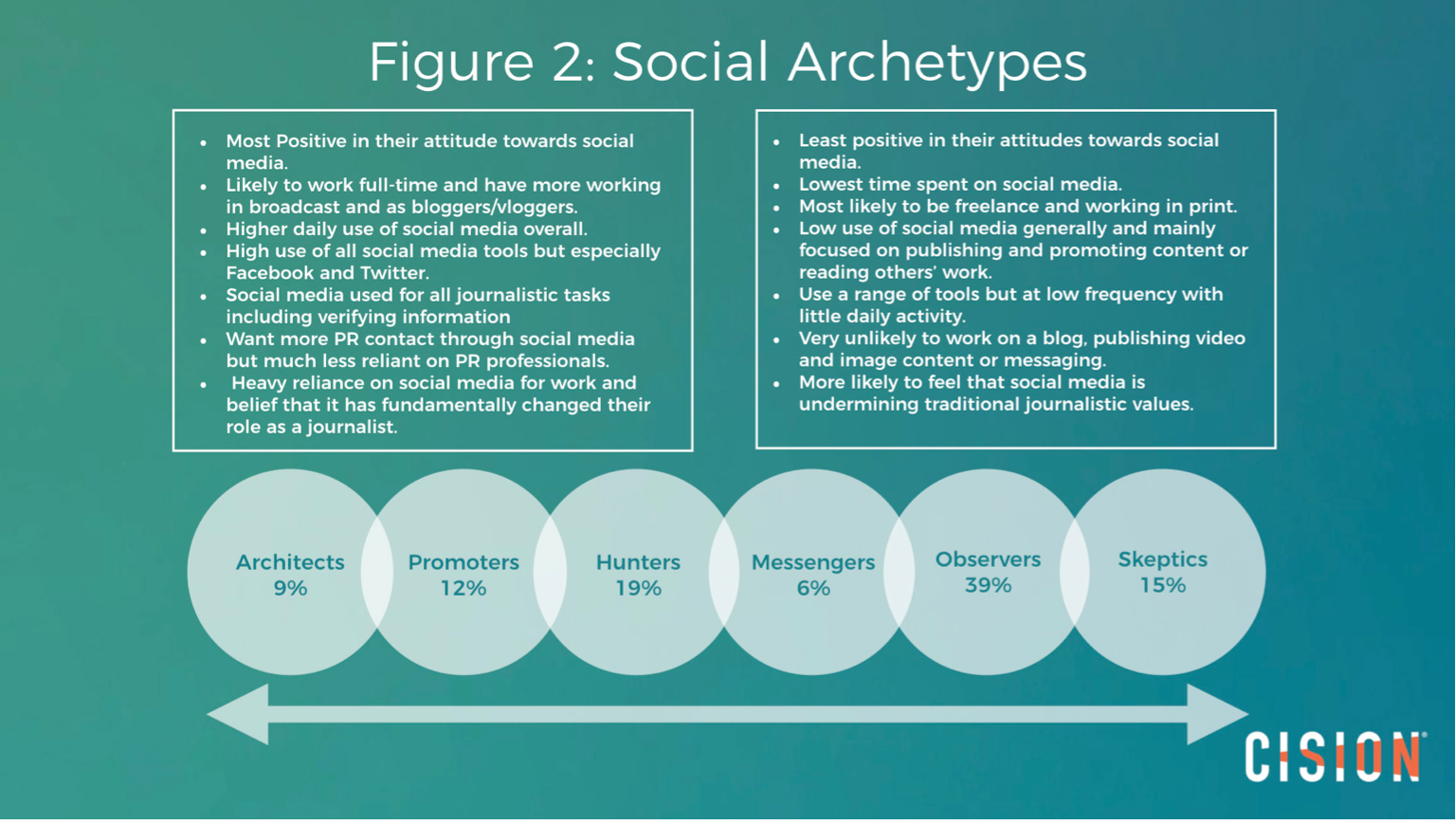Cision MediaRoom
This is a template for a simple marketing or informational website. It includes a large callout called a jumbotron and three supporting pieces of content. Use it as a starting point to create something more unique.
Articles

Best practices for marketing often, if not always, suggest some degree of segmentation for customers or the public. Finding different ways to identify behaviors and differentiate messaging to best suit these personas is crucial for most PR and marketing functions. Often, people write about journalists as “journalists” – a nebulous bunch of undifferentiated people who perform the same tasks (perhaps in different verticals). And you hear journalists complain about this lack of differentiation in how the PR community pitches them.
The Cision 2017 Global Social Journalism Study provides some very tangible insights into the social media perception and behaviors of journalists. As it turns out, there are a lot of different ways that journalists view social media as it relates to their work, and it affects everything from how they perceive the platforms to how long and to what extent they use social to do their jobs.
The Global Social Journalism Study broke down these behaviors into six “Social Archetypes:”
- Skeptics
- Observers
- Messengers
- Hunters
- Promoters
- Architects
What I want to do in this post is to take a look at these “Social Archetype” groups and talk about their perceptions of social, their use of social and how this type of segmentation may be useful information to a PR professional or marketer.
Architects
“Architects” are the most pro-social group of journalists. About nine percent of journalists fall into this category. An architect journalist feels as if they cannot do their job without social media, and typically produces a lot of digital content.
What is unique about architects is the extent that they use social media to source their content and to interact with their audience. An “architect” journalist will spend no less than five hours per day on social media, and one-third will spend more than eight hours per day using social.
Two in five journalists segmented as architects reported openness to receiving social media pitches from PR professionals, although they are ambivalent about the quality of pitches that they receive. This is by far the most agreeable group to this practice, however.
Promoters
“Promoters” are all about promotion on social media platforms. About 12 percent of journalists fall into this category.
These journalists are also very pro-social but perceive the benefits of social a bit differently. A promoter has a less favorable view of sourcing information through social than the architects and sees social as a means to promote their content and interact with their audience. They are creating a lot of digital content, and view social as important for promotion but also believe that social promotes speed over quality content. Where the architect might see everything social as awesome, the promoter sees it as an important, (somewhat) specialized tool.
And nearly half of promoters say that they would like to be contacted by PR pros on social, although they are more skeptical of PR content than architects.
Hunters
“Hunters” are the reader-leaders of journalists. About 19 percent of journalists fall into this category, which is characterized by monitoring social media, but not sourcing or checking as much of their information on social. Like Promoters and Architects, Hunters still find a lot of value in promotion and audience interaction, preferring Facebook and Twitter over other platforms.
There is a precipitous drop-off in the amount of time that hunters spend on social media daily versus promoters and architects. Nearly all hunters spend less than four hours a day on social, the majority spending less than two hours.
Hunters also have one of the most favorable views of the PR profession of all archetypes.
Messengers
“Messengers” are the second most likely group to communicate with messaging apps such as WhatsApp and Facebook Messenger (next to Architects), but are very specialized in this practice. About six percent of journalists fall into this category.
More than 80 percent of Messengers use social daily, with one-third using social between three and four hours per day. What is unique about this very specialized group of social users is that they perceive social as increasing their productivity instead of diminishing it.
75 percent of Messengers report that are skeptical of PR professionals, but the majority see PR as an important source of information.
Observers
“Observers” are the biggest of all social archetypes and primarily equate “social media” with Facebook and Twitter. About 39 percent of journalists fall into this category.
We characterize Observers by inconsistent social media usage (some journalists in this category only use social for a few hours per month, although many devote less than two hours daily). Observers will promote their content, but lament the impact of social media on traditional journalism. Observers are highly skeptical of PR professionals and favor subject-matter experts, industry and professional sources for their content.
One interesting thing about this archetype is that the journalists falling into this category have increased by more than 100 percent since 2014 and almost 400 percent since 2012. This is somewhat counterintuitive as one might assume that Architects and Promoters would show the most growth because of increasing use of social media, especially with all of the digital responsibilities that most journalists have.
Skeptics
“Skeptics” are just that: skeptical of social media. About 15 percent of journalists fall into this category.
What characterizes Skeptics is an extraordinarily different social media usage pattern than other archetypes. In fact, only 16 percent of Skeptics report using social media platforms daily. And only 32 percent reporting weekly usage. These are the Anti-Architects.
Interestingly, many Skeptics are concerned about copyright law as it relates to social media. They are not Luddites: they use email consistently and prefer it as a means for contact. And Skeptics, although apprehensive of social media are no more ambivalent as other groups about PR professionals than many of the other archetypes.
Conclusion
One of the most important takeaways from the Cision 2017 Global Social Journalism Study is that there is a huge variation in how journalists view social media and use it to do their work. Throughout the spectrum of Social Archetypes, we see most journalists have a conflicted relationship with PR. Perhaps tools like the Social Archetypes are a way to bridge the trust gap by better understanding the perceptions and habits of social journalists.

